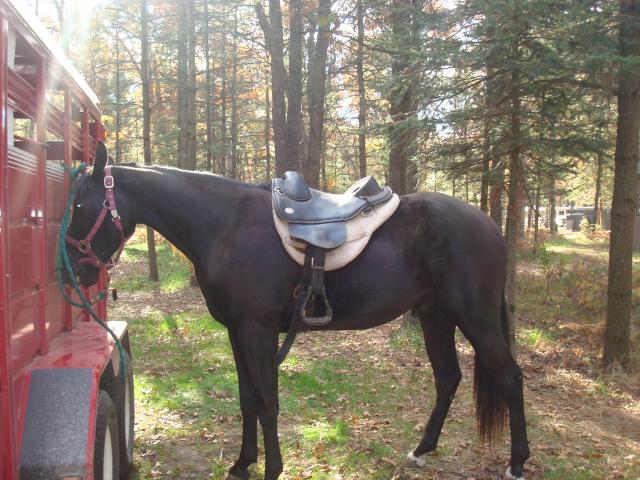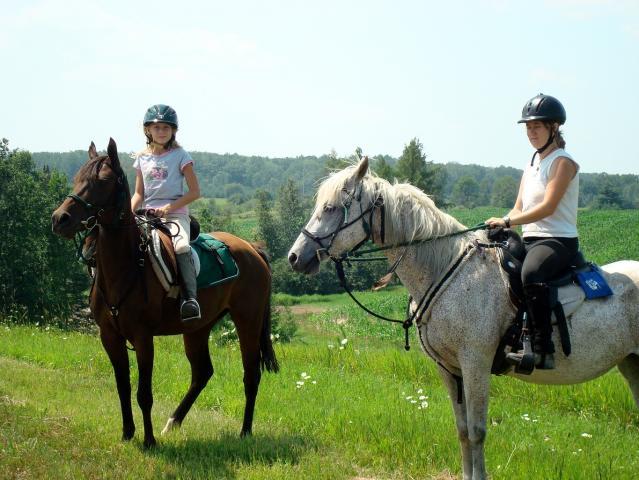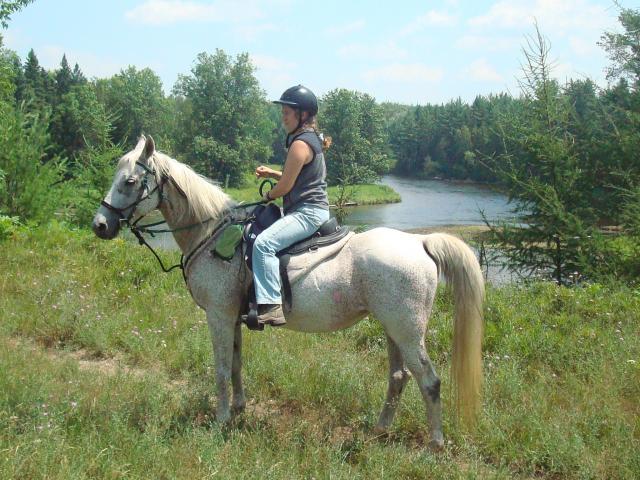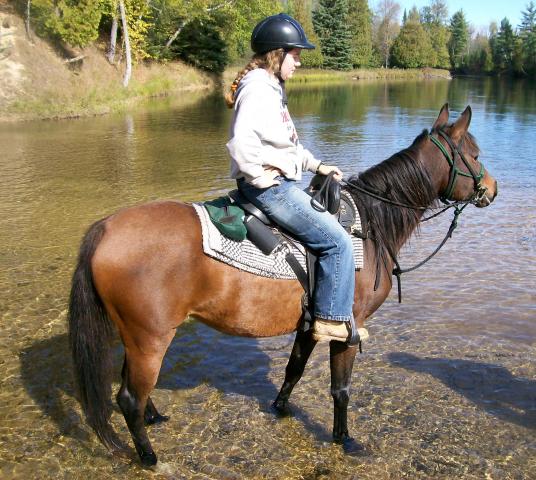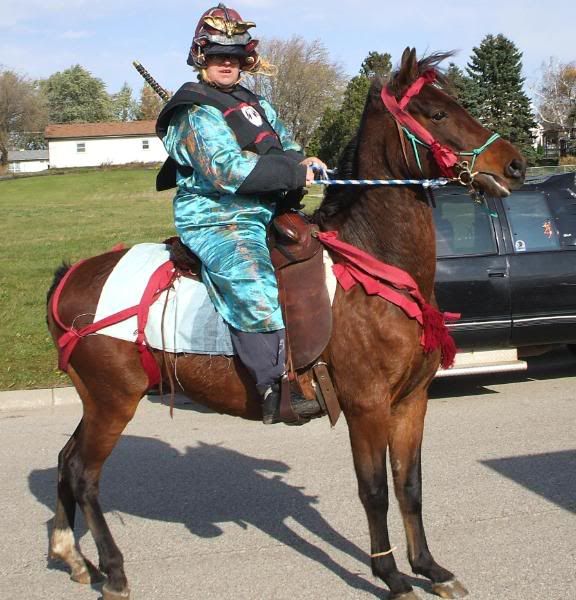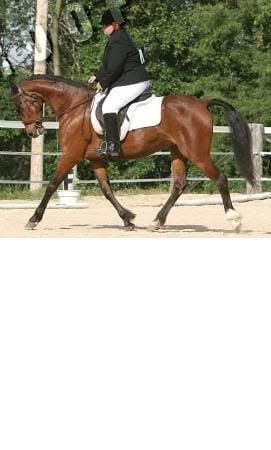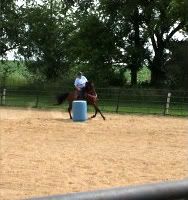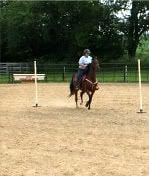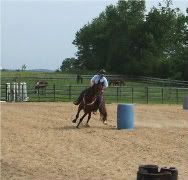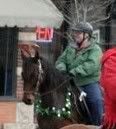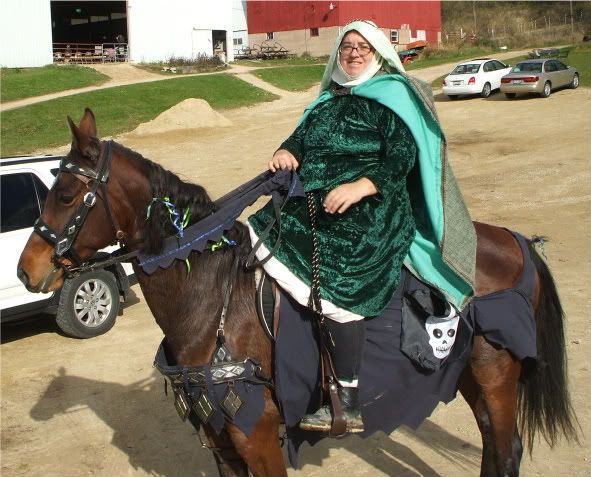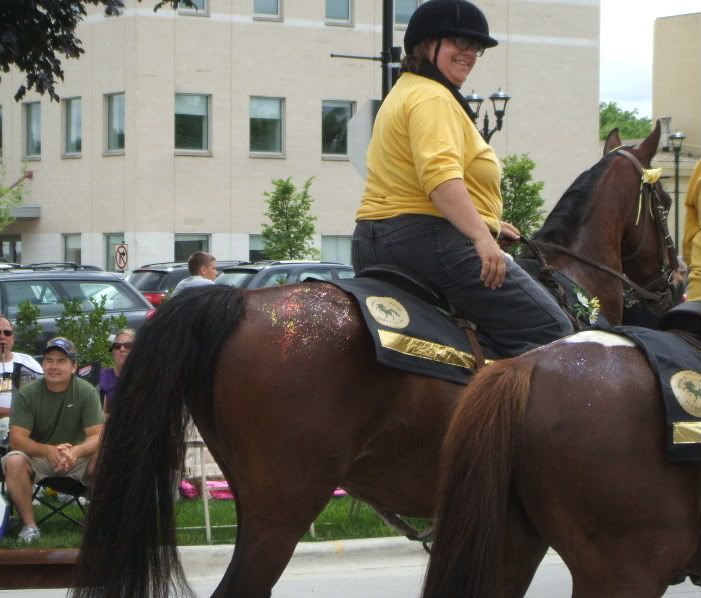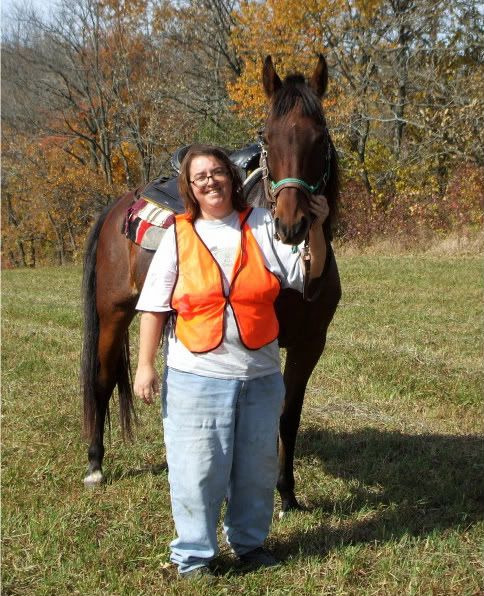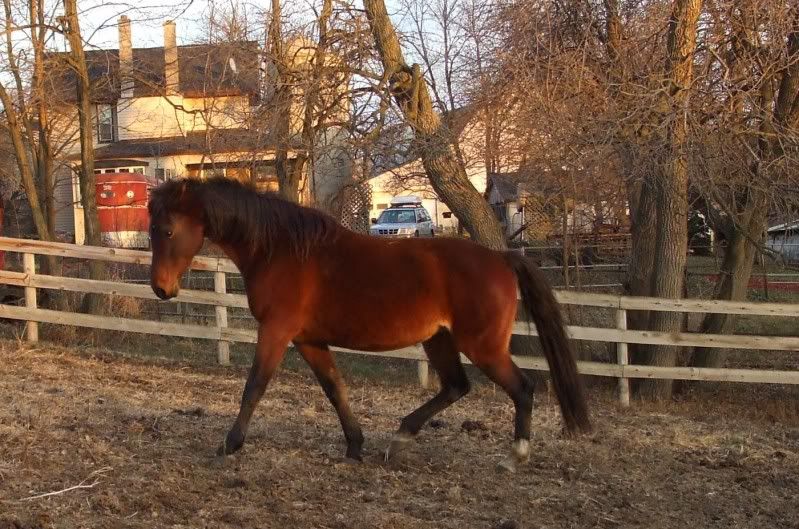Quote:
And lets not forget Fury!!
ANother thing to remember is that if you get a horse, 1 horse you will need a companion animal or two so that when you take your horse for a ride, the animals won't get bent out of shape while the horse
is gone. Sheep or goats make good companions.
Don't get 1 of those, get a pair, even llamas are good.
When you go saddle shopping, remember some serious advice.. 1- get a wither tracing of the horse's back, 2- work with a person or a store that will let you leave your credit card number OR check
so you can see if the saddle fits, if it doesn't you can return it and try another (use a clean thin towel OR a sheet to see if it fits so you don't get hair on the fleece/underside of the saddle).
Don't be "wow'd" with looks on a saddle!!!
4- the saddle needs to fit the horse
1st!!, then fit you.
When horse shopping, take an experienced person with you OR pay a trainer to come with you.
Caveats when horse shopping.. IF the horse is standing there waiting for you all saddled up.... ask the owner to remove the saddle and turn the horse out so you can see how it is to be
caught and saddled/handled/groomed. If they refuse walk away.
IF they refuse... walk away. A good seller shows how the horse is to be caught, groomed and saddled. You can learn alot about the horse watching this.
Now its not always a bad thing... my BO has a mare who a great mare, but once she has been caught and ridden... the next time she sees that halter, she is off like a rocket, and refuses
to get caught. So we put her in a smaller paddock instead of the big pasture, the mare is a great mare she had learned she could get away with things by taking off when we wanted to catch her.
Ask the owner to walk the horse out to see how it travels, walk/trot being led, see it lunged at w/t/c. Is the horse cinchy or bad to tack up??
Then have the owner OR one of their people/relatives ride the horse first, if they refuse, walk away. They are hiding something.
The horse is familiar with these people, you will see more things right and wrong, then when you or the trainer try the horse.
Have your experienced horse person go over the horse with you, perhaps have them try the horse, and then you.
IF you see things you don't like, IF the person you brought with you doesn't think the horse will work for you, listen to them.
This is a buyers market, you can find a good horse at a good price.
Don't just go look at the "pretty" horses...
I have seen time and again people say they are looking for a 16HH black and white (fancy horse) OR Pearl white/buckskin/palomino/dun/roan horse.
The boring chestnut, with 1 white leg, high withers, straight shoulder, ugly(ish) head.. could be the most perfect, trustworthy horse you will ever have!
SO stay away from the bling, look beyond the drool factor pretty horses and look at ALL the horses in the area you are moving to, to purchase.
Stay away from sellers who refuse to show you how the horse is in the field/tacking up/riding their own horse(or having a relative/trainer do it).
Get a proper fitting saddle for the horse, then see how it fits YOU.
Don't get a baby or green/young horse unless you truly know how to work with a young horse and can wait the few years it will take for it
to grow, then be trained.
Be open minded and look past the stereo types of breeds of horses, Saddlebreds being super high strung, Arabs being hyper, Appy's being stubborn and will go blind from moon blindness.
TB's from the track only knowing one gear (fast).
And lastly IF you are going to show, remember the fashion trends for western (HATE IT!!!), english is more traditional and boring
.
Give your new horse time to settle in, take things slowly, work with some one if you can.
AND WEAR A HELMET!!!
Keep us posted of what you are looking for!!
Here are some pics of my 9 yr old Saddlebred cross, she is neurotic, high strung, goofy, gets bored easily, but I can do anything I want with her, I trained her myself, and she is a
horse that only a few people could like.
Indi and I in a costume parade
Indi and I doing dressage
Barrel racing and pole bending
Christmas parade
Costume trail ride that was 3 hours long
Indi and I last summer in a parade (she hadn't been ridden in a few months)
OUr last trail ride of the year last fall, I had broken my shoulder and she had
not been ridden in months again. only 3 times last year.
And a pic from winter








